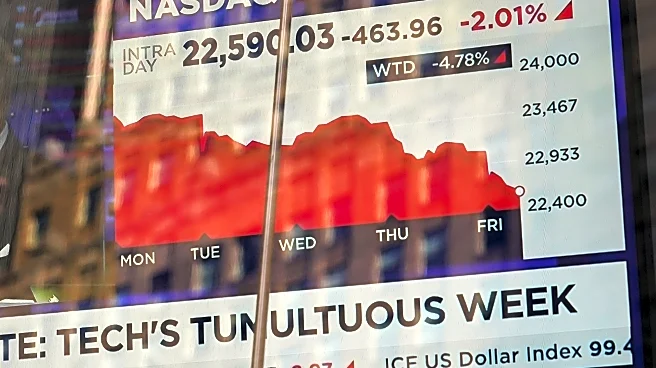What's Happening?
Oil prices have increased as the U.S. Senate advances measures to end the government shutdown, which has lasted 40 days. Brent crude futures rose by 0.7% to $64.06 a barrel, while U.S. West Texas Intermediate crude reached $60.18 a barrel. Despite the positive
movement in oil prices, concerns about oversupply in the crude market remain. The shutdown has affected federal workers and disrupted services, including air travel, with significant flight cancellations impacting jet fuel demand.
Why It's Important?
The rise in oil prices reflects investor optimism about resolving the U.S. government shutdown, which has had widespread economic impacts. However, the persistent oversupply concerns in the crude market could limit further price increases. The shutdown's resolution may restore market confidence and stabilize oil demand, but oversupply issues could continue to challenge the industry. The situation highlights the interconnectedness of government operations and global market dynamics.
What's Next?
As the Senate moves forward with the shutdown resolution, the oil market will be closely monitored for changes in supply and demand dynamics. The Organization of the Petroleum Exporting Countries (OPEC+) has agreed to increase output slightly in December, but further hikes are paused for the first quarter. Analysts will watch for any shifts in crude inventories and the impact of Western sanctions on oil imports into China and India.















